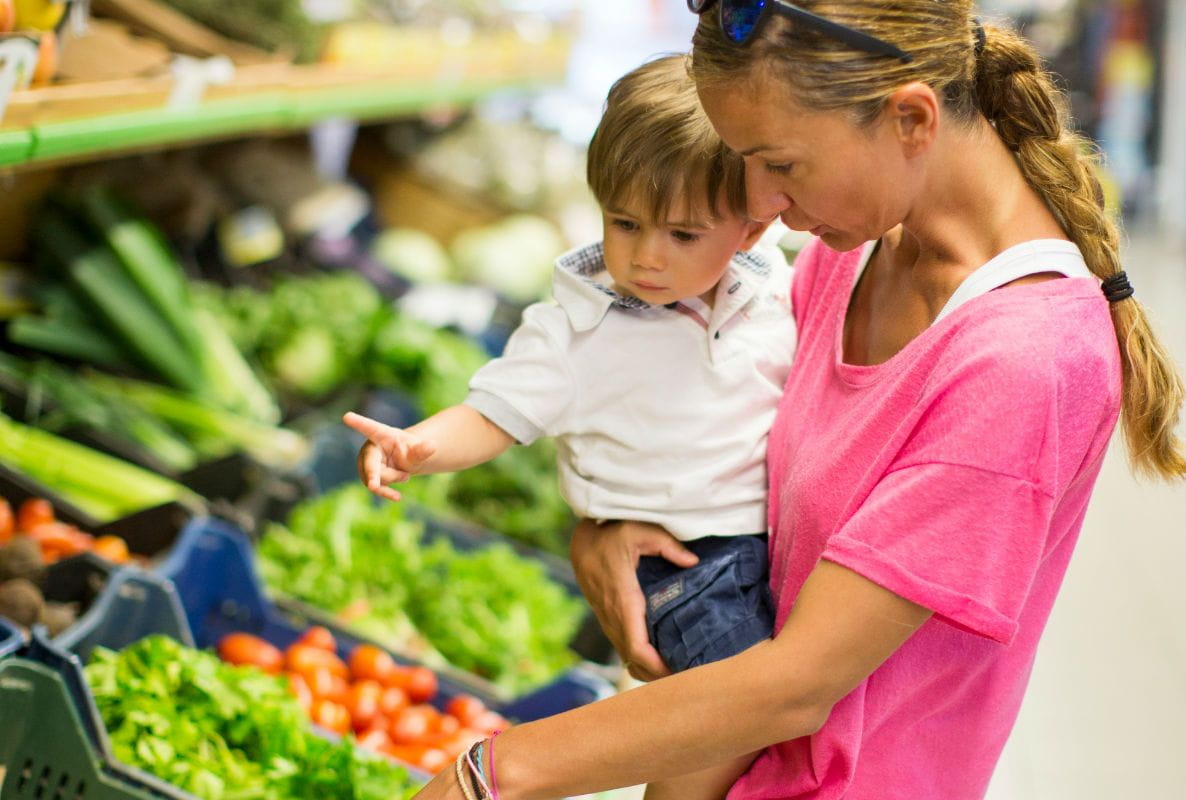Hunger Games! 12 Ideas to Turn Your Shopping Trip into a Brain-Builder

Chances are, there are other places your child would rather go every week than the grocery store—but luckily, we have some ways for you to stave off her complaints of boredom, keep her tear-free, and keep her learning all at the same time! Here are just a few math and literacy activities you should add to your list the next time you and your child hit the aisles.
Math Activities for Younger Children
- Opportunities for counting are, quite literally, everywhere. How many wheels are on your grocery cart? How many people are in the aisles? How many grocery store workers does your child see? How many items are in your cart? How many people are in the checkout lines?
- While you hunt for bargains, have your little helper hunt for numbers! Signs above each aisle, signs at the ends of aisles, price tags on shelves, the amount of each item on the cash register screen—numbers pop up a lot in a store. Does one number seem to show up more than others? If he wants a challenge, designate a specific number and challenge him to look for it throughout the store.
- Teach your little one to compare the sizes of similar items, such as cereal boxes, milk cartons, and yogurt containers. Which one is biggest? Which is smallest? Is the milk carton bigger than the yogurt container? This is the precursor to teaching her how to compare prices!
- If you’re not in a hurry, have a little weighing party in the produce department and let your child experiment. Which weighs more, a potato or an apple? Do two potatoes weigh more than a bunch of grapes?
Literacy Activities for Younger Children
- Before you start shopping, tell your child what items you are looking for. Name each item as you put it in the cart. If she’s already familiar with the names of the items, start a little scavenger hunt game. As you walk slowly toward the item, ask whether your child sees one of the items you need somewhere nearby.
- Time for a letter bonanza! If she’s started learning the alphabet, have her look for the letters in her name. Can she find them all throughout the store? Can she even find them in the same section of the store? What about on just one item in the shopping cart?
Math Activities for Older Children
- Get your child into a categorizing mindset by having him count different kinds of the same item. For example, how many different types of breads or cookies does your child see in the bakery section? In the canned goods section, how many different kinds of soups are available?
- Take a look at those prices! Discuss why certain items, such as boxes of cereal, are priced differently. Does the size of a box of cereal determine its cost? Does the type or brand of cereal determine its cost? Which type of cereal is a better buy? Why?
- Head to the scales in the produce department and encourage your child to figure out how many apples or heads of lettuce make a pound. If he tires of that one, challenge him with simple addition problems. If one pound of oranges costs $3.00, how much does two pounds of oranges cost? If he has three yams and each yam costs 50¢, how much for all three?
Literacy Activities for Older Children
- There’s a ton of new words to be found in grocery stores (like enzymes, cultures, and even monocalcium phosphate, if you want to dig into those ingredients lists). Arm your little word wiz with a small notebook and a pencil, and have her keep a list of all the new words she sees around the store or on the items in your cart. When you get home, take to the Internet and look up the words together!
- Take the time to dig into some nutrition labels with your child. What kind of information is included on nutrition labels—and how can we use that information to make good eating choices? What does each part of the label mean? (If she’s interested in the topic, check out our healthy eating book list!)
- In the educational powerhouse of the grocery store (a.k.a. the produce department), invite your child to read the signs and list different varieties of items, such as Bosc and Asian pears or Delicata and butternut squash. What makes the varieties different—their color? Shape? Taste? Why might there be so many choices?




.jpg?la=en&h=800&w=1200&hash=799F5BD6E84A71FB0D1C8E657FE7F226)
